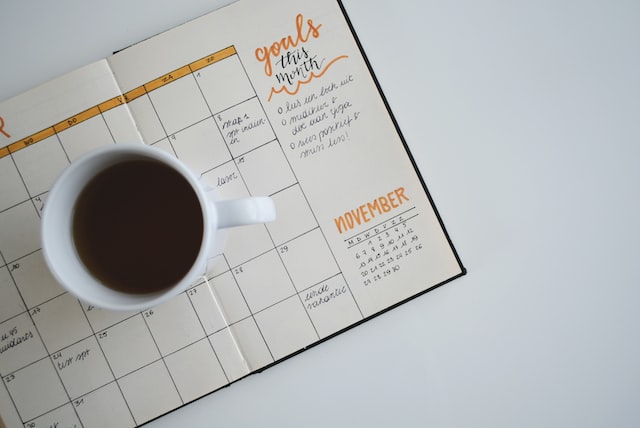Every time you sit down to write, you’re rewriting something.
Table of Contents
Every time you sit down to write, you’re rewriting something.
Learning to revise effectively is a skill that all writers, from beginners to seasoned pros, need to develop.
What Exactly Is Rewriting?
Rewriting involves going back through a draft and making any necessary changes, such as adjusting the wording of a single sentence or eliminating irrelevant material.
In editing, “rewriting” usually means making substantial changes that amount to a fresh draft.
A good piece of writing can be transformed into a terrific one with serious revision.
The Importance of Rewriting: Why It’s Necessary for the Writing Process
It’s not uncommon for a writer to have no idea where they’re headed with a first draft, especially if it’s a lengthy work of creative writing.
When you’ve done your first draft, it’s time to start rewriting, where you’ll use what you learned in future iterations to make them better.
Part of the fun of rewriting is discovering new things about your story as you go.
There are 10 things you can do to improve your manuscript.
Everyone has their method for revising, but here are some tips for rewriting:
1. Make some space in your schedule.

You’ve completed your first draft, but something about it isn’t working for you.
Maybe a character doesn’t feel three-dimensional enough, or your central argument doesn’t grab you.
To edit a project effectively, it’s best to distance yourself from it first.
Instead of diving into revisions right away, try setting the book aside for a while.
A short pause can help you return to your work with a clear mind.
2. Separate your work and reassemble it.

Do not worry that you will somehow “break” your piece.
Rewriting is likely to improve, rather than degrade, your performance.
Significant revisions will likely be required after reading the first draft.
Most of the time, everything needed to create a great piece is already there.
Revision may involve less rewriting and more rearranging, diving deeper, slowing down, speeding up, etc.
Keep reading your manuscript until you find the issues.
It’s okay to go back and change the primary characters or rework the first few chapters.
Perhaps a change in approach to the idea is necessary.
Unfortunately, this is a normal part of the editing process.
But keep working on developing the concept.
3. Put on a different persona for a while.

When going back to your manuscript for revisions, put yourself in the shoes of a new reader.
Read what you’ve written as if you were someone else—the closest friend or your ideal reader.
How do you think they’d react to that?
Don’t worry about making every mistake; focus on telling the story.
4. Consult a writing partner or editor for comments.

You’ll eventually have to share your creations with the world.
Discovering a reliable new reader might be challenging, but their feedback is well worth the effort.
You need to find someone familiar with the genre you write in and who isn’t going to be overly enthusiastic about your work simply because they care about you.
As readers, other writers are often fantastic options.
They are aware of the strengths and weaknesses of novels and how to enhance them.
It’s not uncommon to arrange a trade when you read each other’s manuscripts.
Don’t just ignore the advice of editors and readers; give it a shot.
While not all of your ideas may pan out, just learning which ones don’t will help you in the long run.
5. Limit the amount of time you devote to fixing the issues.

It might be challenging to know when a manuscript is complete.
You might be halfway through a manuscript before realizing it’s not working.
Don’t waste time fixing the same mistakes over and over again.
Doing so is a kind of procrastination and will likely leave you more frustrated.
Seek a middle ground: Correct your writing so it flows more quickly, but don’t edit until the novel loses its spark.
6. Find places where the language could be improved by rephrasing.

Once you have completed your rough draft, it is time to undertake a line edit.
If you’re looking for places where something doesn’t quite seem right, such as when the writing is sloppy or something is overwritten, or when a character acts inconsistently, here are the places to start.
Find places where there is an imbalance between the amount of dialogue and the amount of explanation, and work to strike a better balance between the two.
Follow your gut to the spots where something doesn’t add up, and then fix them.
7. You might use color to organize your files.

Make use of a color-coding system to track your work’s status.
Use green to indicate content with which you are satisfied, yellow to indicate uncertainty, and red to indicate content that needs revision.
To review your paper successfully, you should strive for a green status at each stage.
Editing may be transformed from a tedious chore into a fun task with the help of color cues and a clear goal.
8. Inquire thoroughly.

When you’ve finished writing the first draft of your novel, utilize this checklist to make any necessary changes: The big dramatic question I have is… Where is the rhythm off (too much explanation, too much dialogue)? How can I strengthen the foundation of my story?
Can you tell me which parts of my story are unnecessary and boring?
When I wrap things up, do I resolve the central dramatic question? Your input here may result in major changes.
9. Talk out loud when reading your paper.

Be sure to read your work out loud as you go to more refined drafts.
Doing so will hone your ability to edit and improve your work.
When reading your own words on a computer screen or piece of paper, your eyes tend to skim past grammatical flaws, odd sentence structure, and typos.
The one limitation is that multitasking can cause you to lose focus and stop listening.
10. Produce a physical copy for review.

Try printing a copy if you need to refer back to the manuscript later.
As a result, you may feel more connected to the reader’s perspective.
This allows you space to take notes on problem spots and creates a surprising change in how you read stories.





More Stories
What Is a Youth Opportunity Center? Programs, Benefits, and How They Empower Young People
Top 7 Ways to Learn French Online from Home in Paris
What Makes a Centre of Excellence Work? A Friendly Guide to OPD and System Health Checks